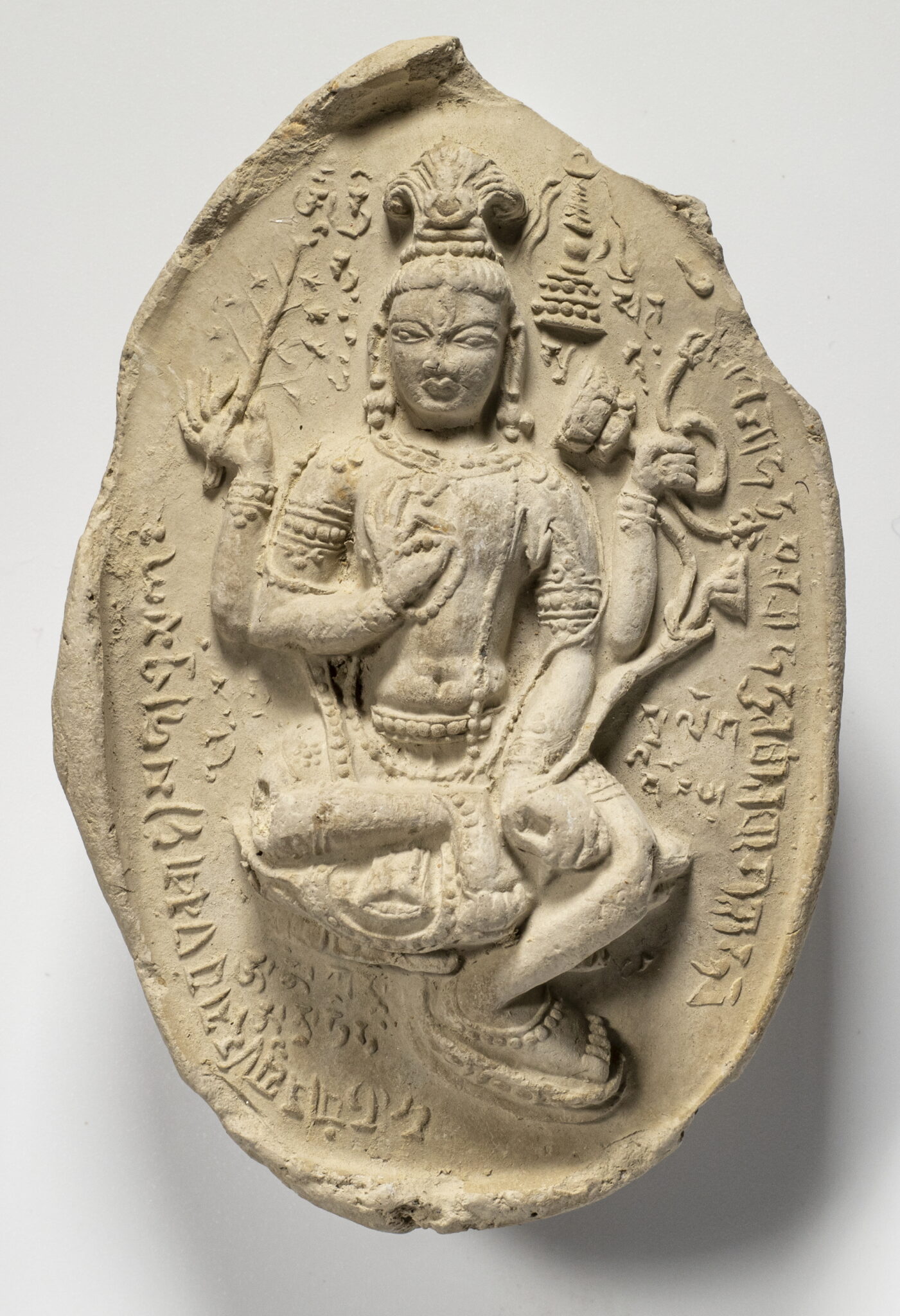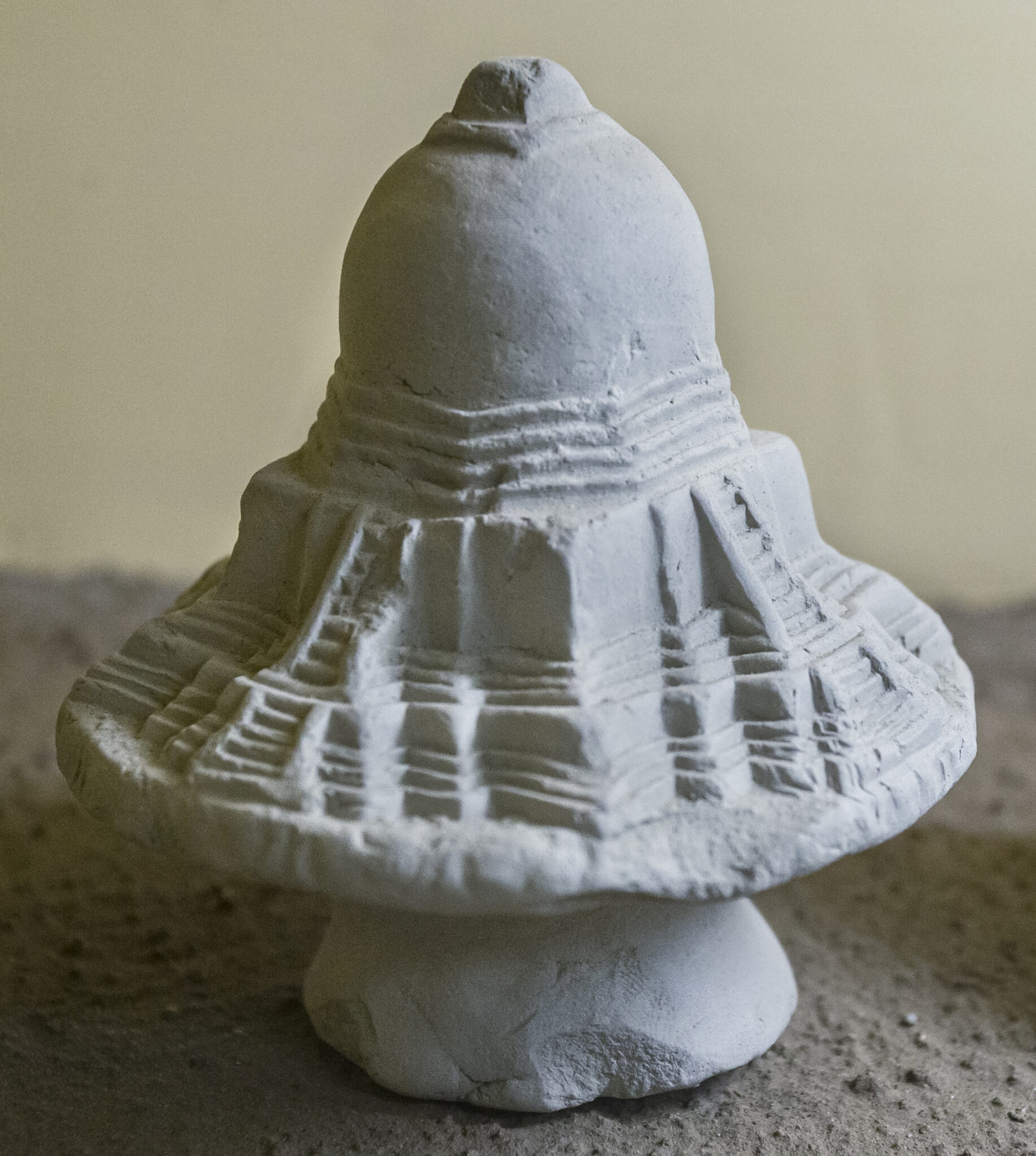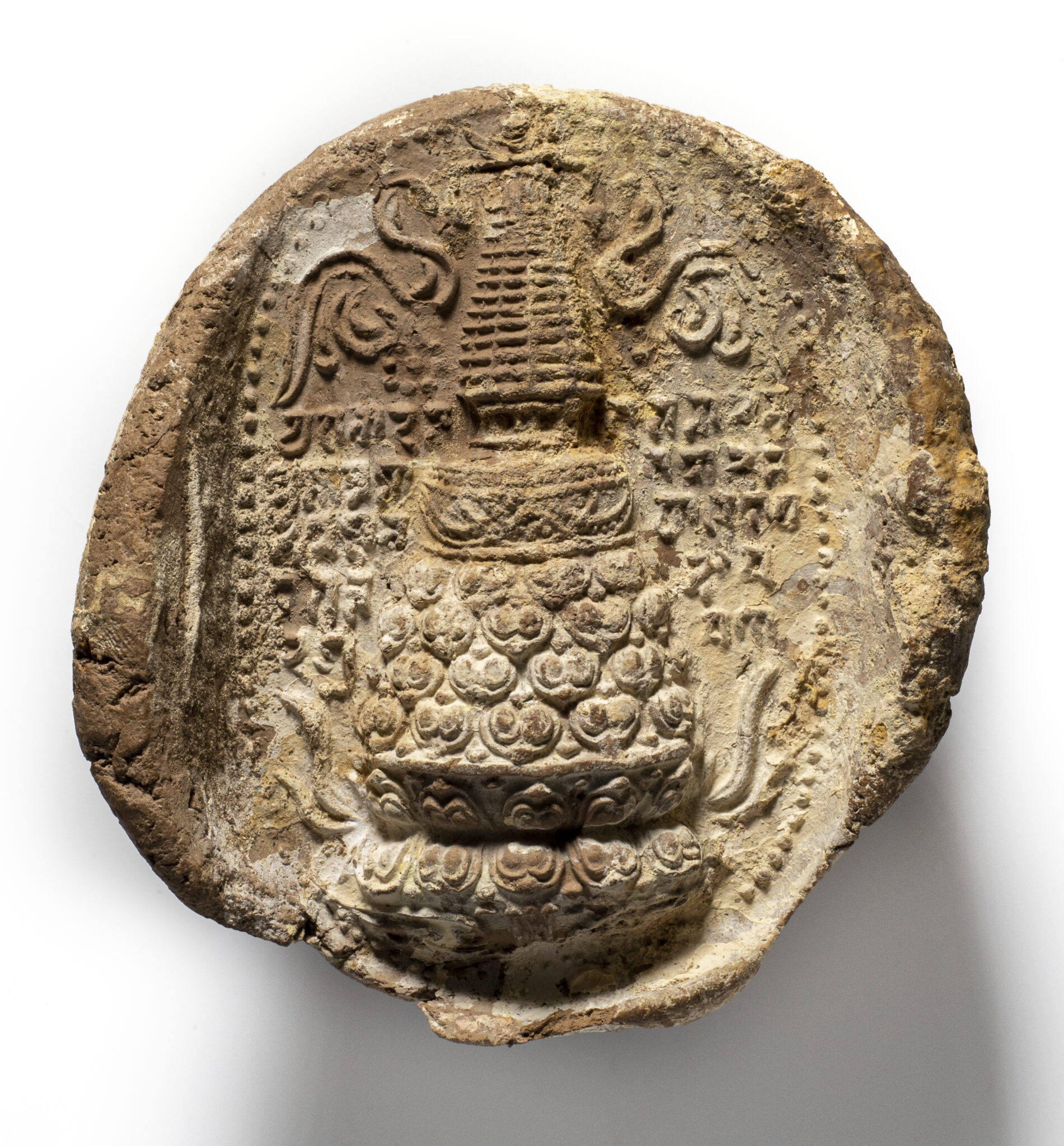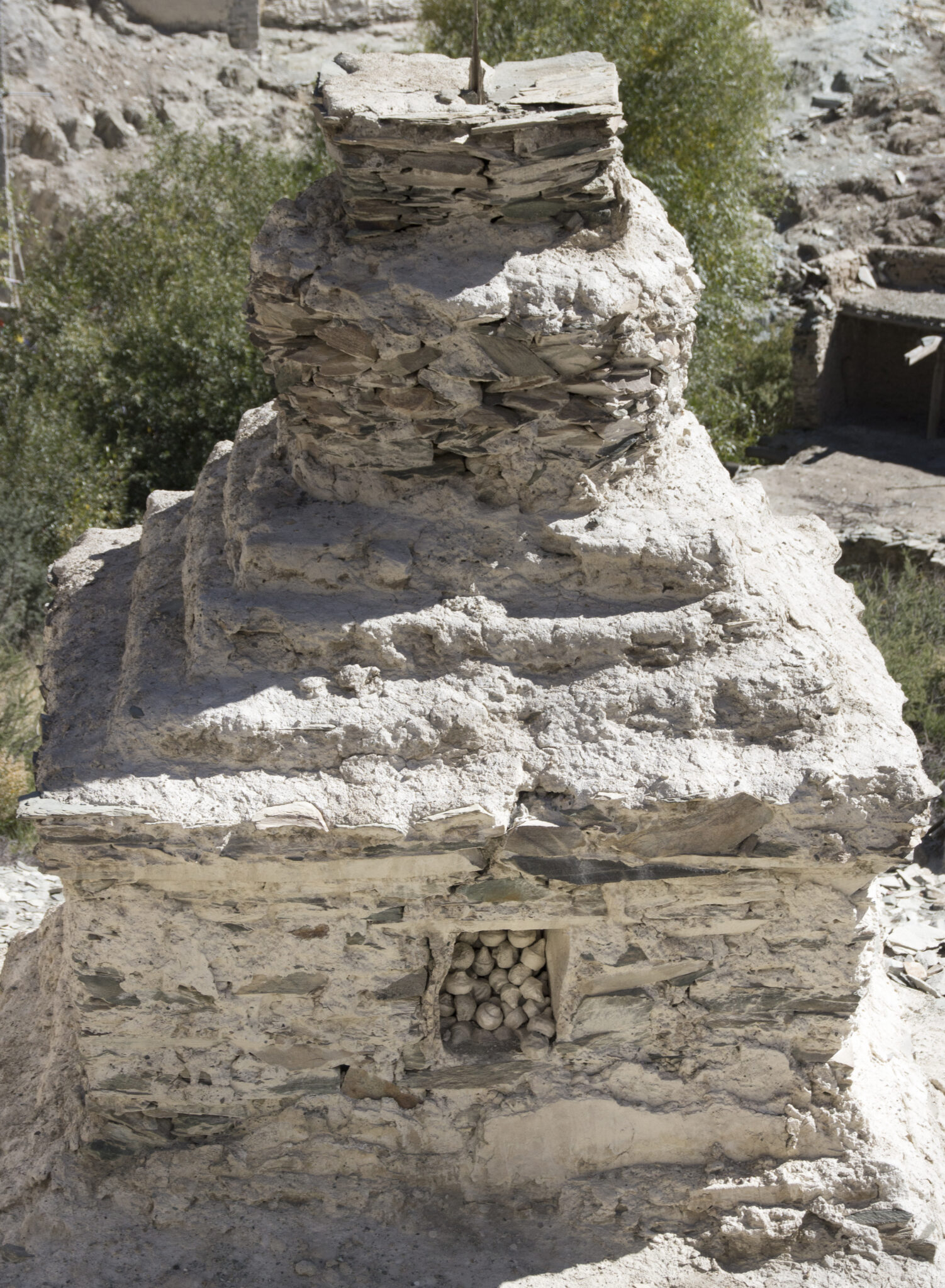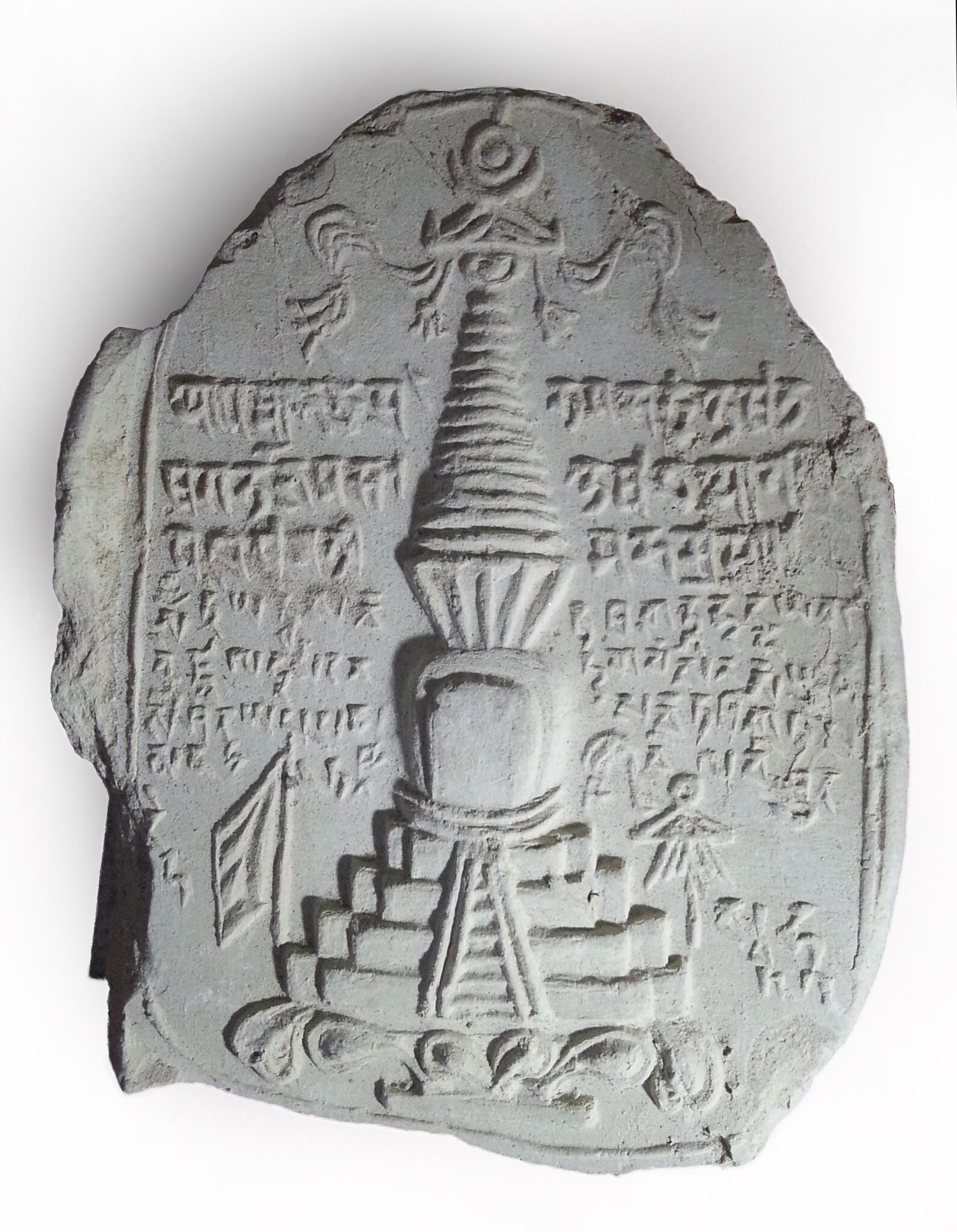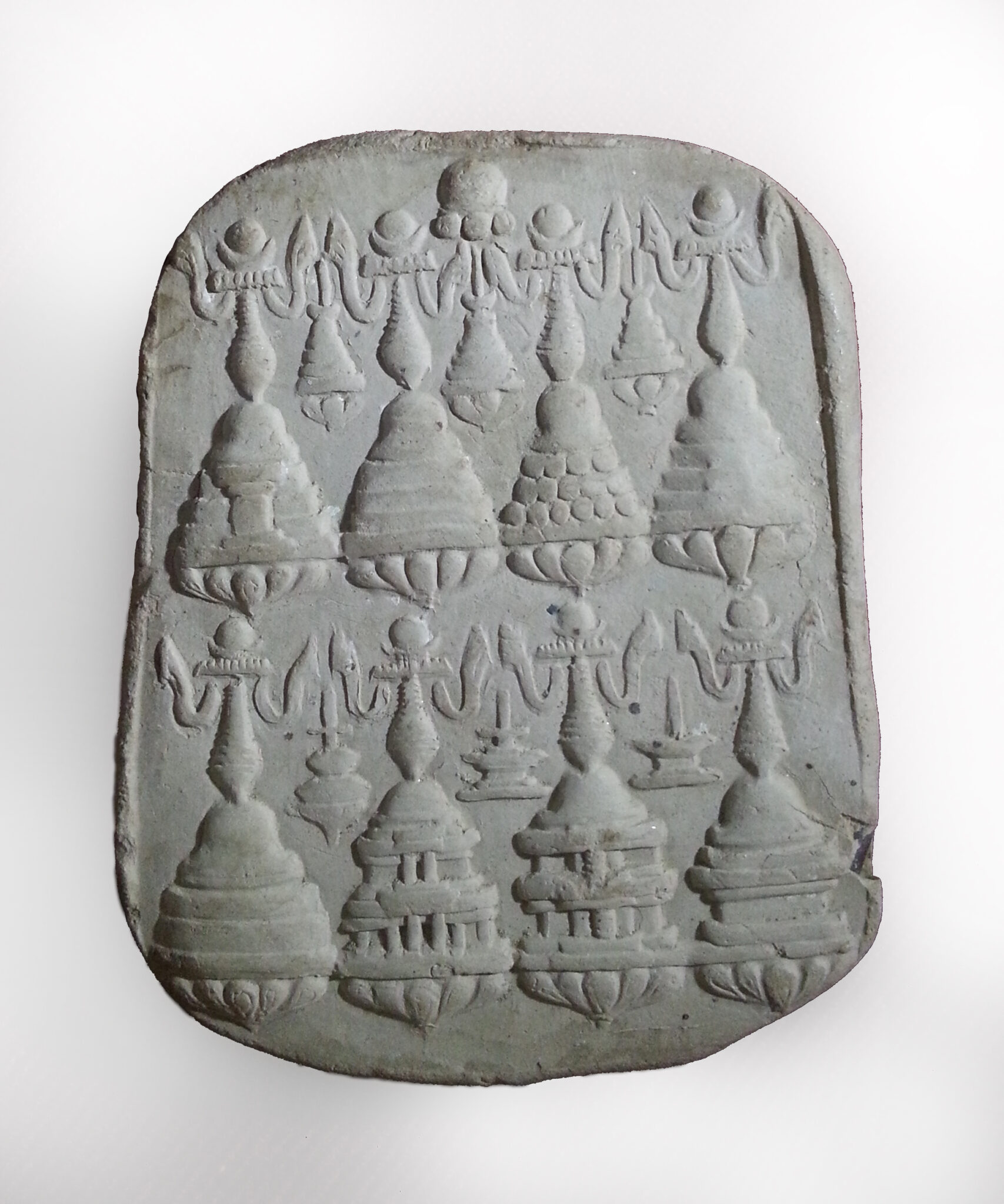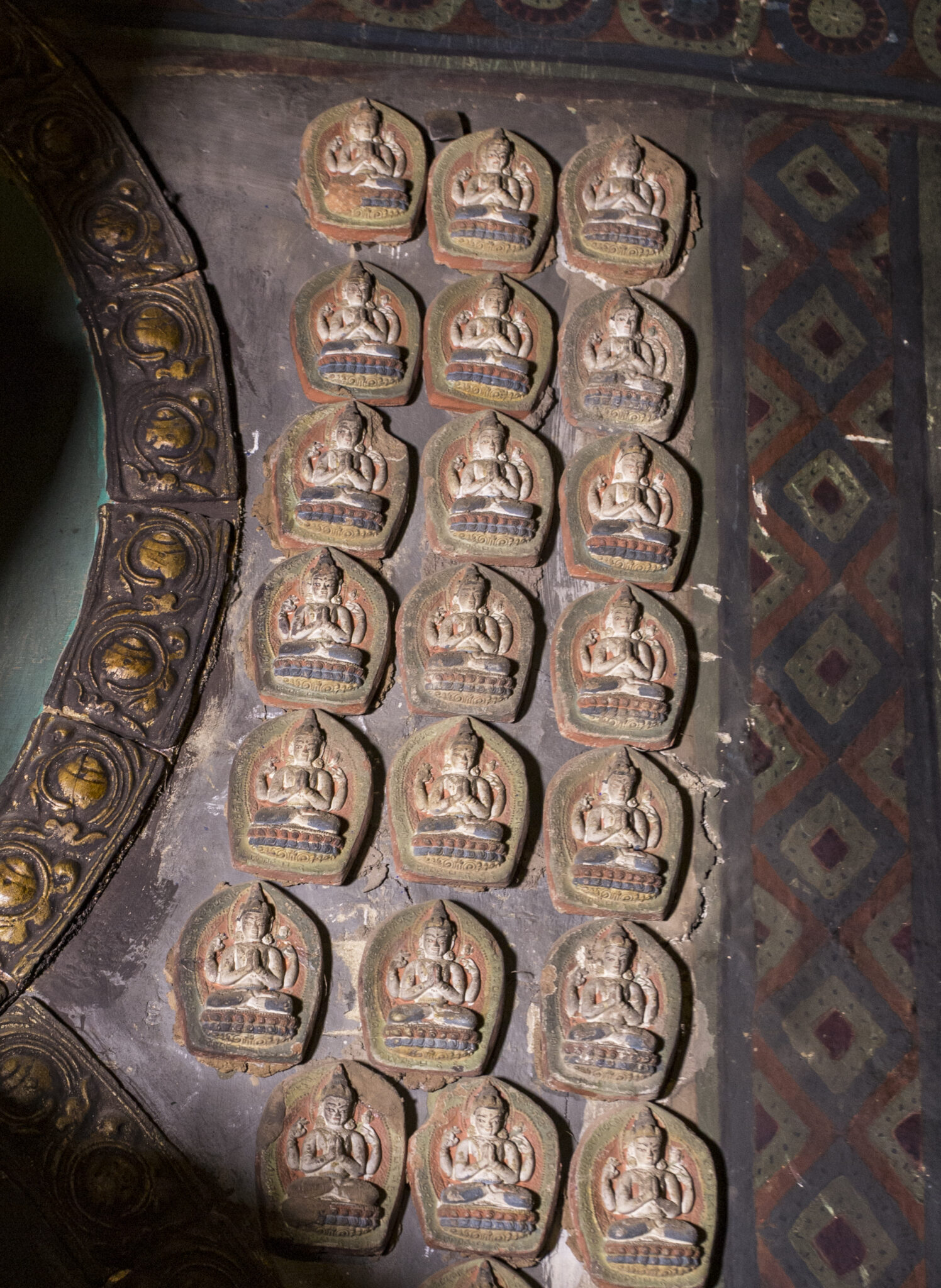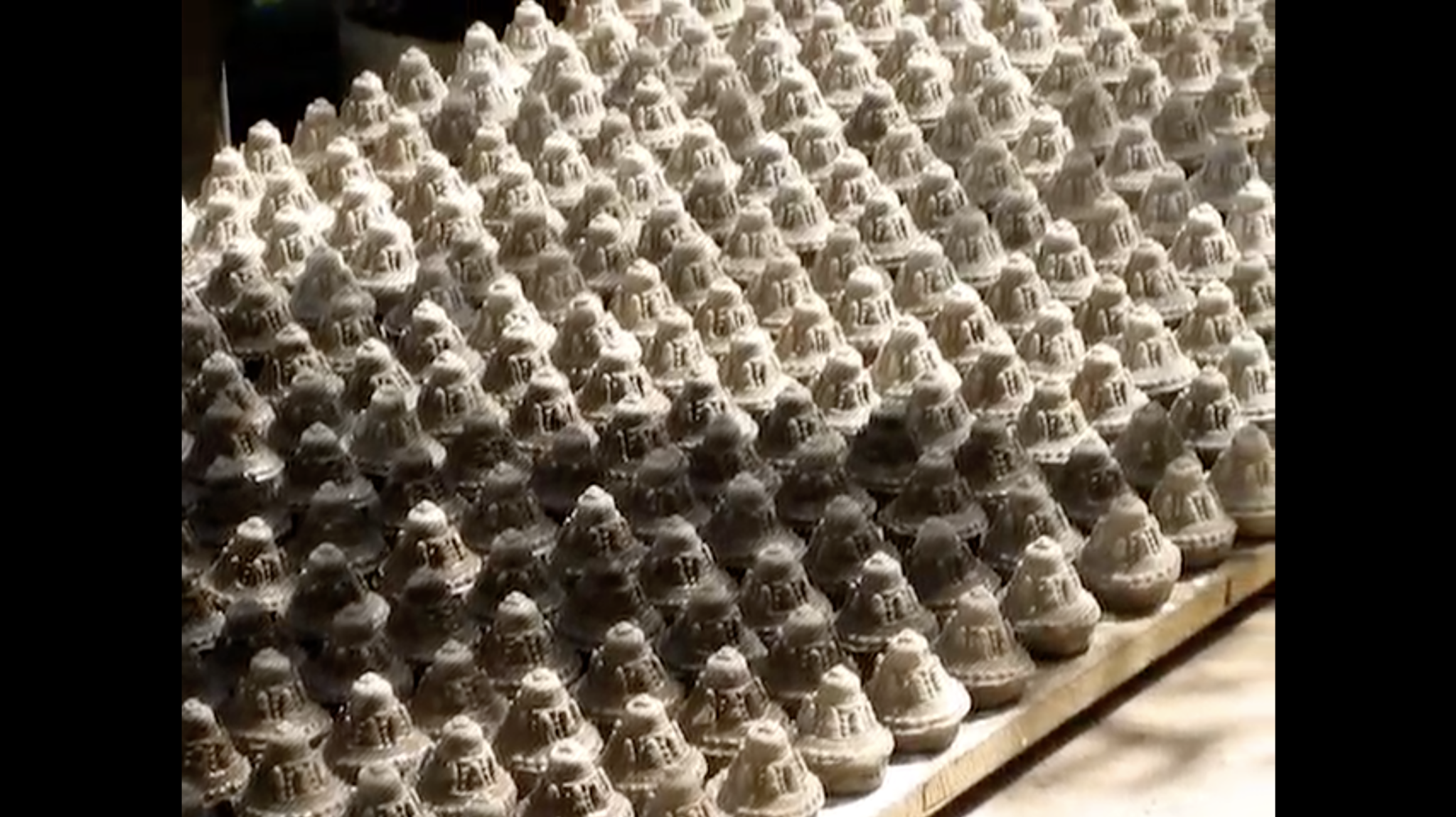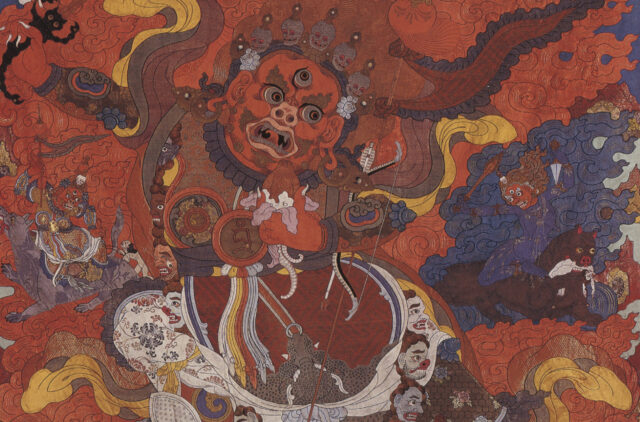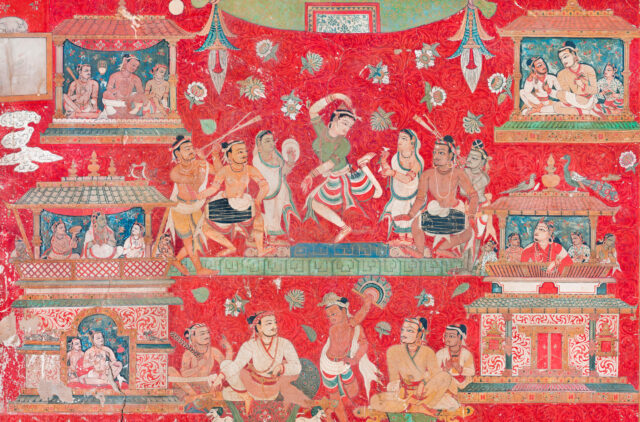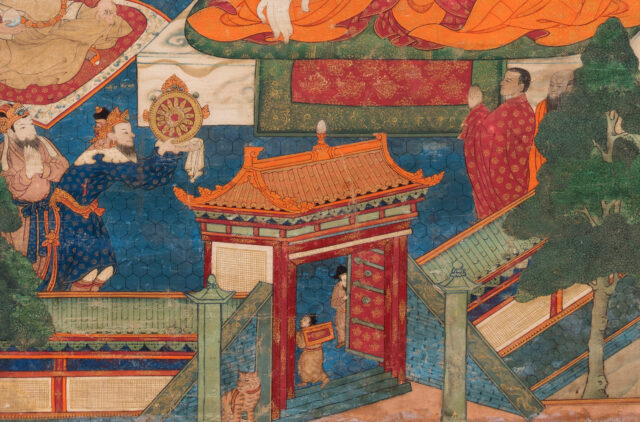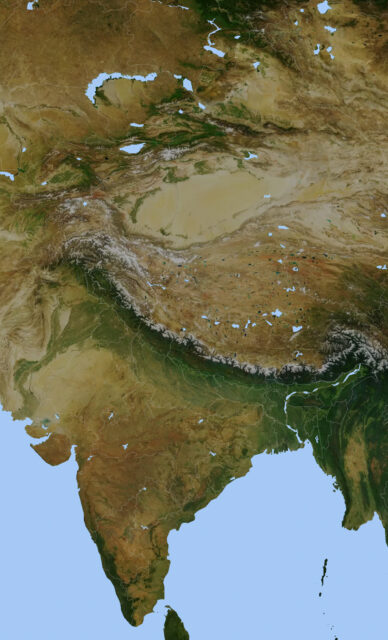Summary
Art historian Kunsang Namgyal-Lama examines one of the hundreds of thousands of tsatsas—small clay images pressed from molds—that monks and laypeople in Tibet regularly produce. Kashmiri and Indian teachers taught this devotional practice in western Tibet from the tenth century onward, and the clay images of deities, stupas, and texts reflect the complex religious landscape of the time. Often made during funeral rituals, tsatsas are placed into stupas or around holy sites to this day.
Key Terms
consecration
In most Asian religious traditions, when an image of a deity is made, it must be made sacred (“consecrated”) by inviting the deity to inhabit it. A variety of rituals can be involved in this, including dotting the image’s eyes, visualizing the descent of the deity into the image, writing mantras on the back of a thangka, or placing sacred texts and mantras inside of a statue.
In Mahayana and Vajrayana Buddhism, a dharani is a short, Sanskrit language text or spell-like formulas thought to have protective power when written or recited out loud, often as part of a ritual. Often inscribed on objects or at sacred sites, their power through the written physical presence is associated with long life, purification, and protection. Dharanis are similar to mantras, but usually longer. One important dharani is the Ushnishavijaya Dharani. The Pancharaksha is another important text that contains five dharanis of protection.
In Buddhist philosophical thinking, pratityasamutpada is an explanation of the continuous processes of causation that create the cycle of rebirths. A simple explanation of pratityasamutpada is that no thing or thought exists eternally and of itself; everything that exists arises in dependence on causes and conditions, and passes away, producing further effects. Buddhist logic posits twelve links in this cycle of causation, beginning with ignorance and ending with death. These links are depicted as the outer circular band in the Wheel of Life paintings.
merit
In Buddhism, merit is accumulated positive karma, or positive actions, that lead to positive results, such as better rebirths. Buddhists gain merit by reciting mantras, donating to monasteries and those in need, performing pilgrimages, commissioning artworks, reproducing and reciting Buddhist texts, and other deeds with good intentions. It is believed that merit can also be transferred to others through rituals performed to gain merit for deceased family members help them achieve a better rebirth. Merit making is an important motivation for positive ritual action, and is a prerequisite for success of religious and even secular activity.
relic
In the Buddhist context, a relic is an object or body part of a past master or sacred figure, including Buddha Shakyamuni himself (bones, ashes from cremation, even entire mummified bodies). Another important category of relics is called “sharira” in Sanskrit (Tib. ringsel)— small, pearl-like objects that are found within the cremated remains of enlightened teachers. Another category, known as contact relics, includes things owned or touched by religious masters, such as the Buddha’s robe or bowl. Important types widely used in Himalayan regions are dharma relics (dharma sharira), which are pressed clay plaques inscribed with the verse of dependent origination or mantras. Relics can be placed inside stupas, ground up and used for medicine, or kept in temples for the reverence of pilgrims. A container that holds relics is called a “reliquary.”
Stupas are monuments that initially contained cremated remains of Buddha Shakyamuni or important monks, his disciples, and subsequently other material and symbolic relics associated with the Buddha’s body, teaching, and enlightened mind. As representations of the Buddha’s presence in the world, stupas with their contents—texts, relics, tsatsas—continue to be important objects of Buddhist worship in their diverse forms of domed structures, multistoried pagodas, and portable sculptures. The original form of stupas was an earthen dome-shaped mound containing the remains in reliquary vessels or urns deposited within the innermost core. The dome would often be successively enlarged and surrounded by a path for a walk around in a clockwise direction and veneration (circumambulation)
In Tibetan Buddhism, a tsatsa is a small sculpture created by pressing clay into a mold. Tsatsas can depict deities, stupas, auspicious signs, and more. Some tsatsas have medicinal plants, or the cremated ashes of loved ones mixed into the clay and taken to various sacred sites to generate merit for their better rebirth. In Newar context, a grain of rice is added. Tsatsas are created to generate religious merit and are often consecrated and then placed within stupas, or made by pilgrims and devotees and left at sacred sites. Tibetans have been creating tsatsas since around the eleventh century, and tsatsa making remains a common practice among lay devotees today.
